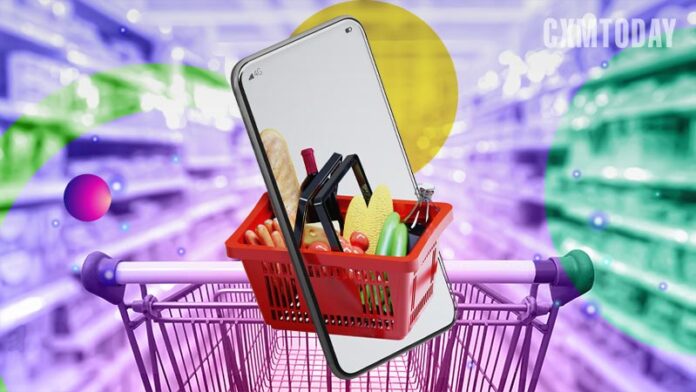Hopping on board the qCommerce bandwagon is a good idea, but only if there’s a long-term strategy behind it.
Most consumers changed how they shop for their groceries and essentials after the Covid-19 pandemic. In 2020, as lockdowns went into effect in major cities worldwide , most of the customers started relying on supermarkets that provided online selection and delivery services over in-store services.
As a matter of fact, in 2020, demand for online groceries doubled in countries such as Italy and the UK. British multinational grocery and general merchandise retailer Tesco’s online business hiked from 9% to 16% of total country sales in the first half of 2020. After the pandemic, online general store Ocado additionally announced a ten times expansion in their deals. Therefore, as online demand increased, many big players in the region started developing innovative customer loyalty programs and better customer services to serve the clients to the best of their needs.
Some innovative CX methods
In 2020, the UK’s second-largest chain of supermarkets, Sainsbury’s, appointed Essence to assist it with executing a “single-minded” digital marketing strategy. At the core of the model is what Sainsbury’s described as a “digital center of marketing excellence,” which utilizes united client information and bits of knowledge to convey “relevant, dynamic and highly targeted digital experiences to customers”.
In the middle of the pandemic in 2021, Sainsbury’s additionally opened its first checkout-free SmartShop Pick & Go store which uses the same technology as Amazon. To enter the store, customers need to scan a QR code using their SmartShop app linked to a credit or debit card. Then when browsing through the store, the “Just Walk Out” technology tracks shoppers as they remove items from racks. It also recognizes when a customer puts something back, so they’re not accidentally charged.
Tesco also opened a similar store in central London, enabling customers to check-in at the store entrance with a smartphone app, select the products they want and leave without scanning their purchases or paying for them at the check-out.
When qCommerce stepped in
Aside from going contactless, numerous supermarket giants have revamped their CX in the past two years. Because of the Covid lockdowns, Aldi made a special effort and banded together with the British internet-based food conveyance organization Deliveroo as the interest in home delivery surged. Customers could order groceries and essentials from Aldi via Deliveroo at the time.
Considering the above examples, it is clear that online grocery is the new market. But beyond the weekly shop delivery, shoppers likewise need their staple things followed through on request. That can, for example, be a couple of items delivered directly to their doorstep in a short period of time. So from eCommerce, we’ve moved on to the next generation of quick commerce. This has brought about another yield of European start-ups that aim to deliver grocery items from check-out on an app to delivery on your doorstep in just 10 minutes.
The competition is real
More than ten companies, half of which were established in 2020, currently compete across Europe with this business delivery model. Working out of what are known as “dark stores”, these local fulfilment centres process online orders that are then picked up by couriers for delivery via e-bike, bicycle, or scooter to customers in superfast time. According to Zendesk, startups like Weezy, Getir, and Gorillas are driving the way. The latter, established in Berlin in June 2020, became one of the quickest European new businesses to arrive at a billion-dollar valuation. This empowered it to scale out of Germany into eight nations, where over 10,000 employees now work in more than 180 dark stores.
These start-ups have also started giving traditional grocery retailers tough competition, leading to joining the qCommerce world. In the UK alone, giants like Waitrose, Aldi, Co-op, and Morrisons have all collaborated with Deliveroo and UberEats to get groceries to their customers quickly. Meanwhile, others have launched their own one-hour delivery platforms, such as Ocado with Zoom and Sainsbury’s with Chop Chop. Most recently, Tesco announced the launch of a pilot scheme with Gorillas at five of its large Tesco stores to enable it to get groceries to customers within 10 minutes.
Europe sees huge competition among grocery giants and start-ups to offer faster services and better selections at lower prices. All in all, hopping on the qCommerce bandwagon is a good idea, but only if there’s a long-term strategy behind it. Otherwise, grocers risk derailing their efforts and reputation. Moreover, another hurdle for the qCommerce industry is to keep their growing business sustainable. With the ongoing climate crisis, the grocery giants need to ensure that while delivering orders, they’re not causing a lot of harm to the environment for profit.
With literally one out of three people using or interested in quick commerce in the UK and Europe, this emerging channel definitely presents huge opportunities. However, understanding the distinct shopper profile, which tends to be youthful grown-ups living in metropolitan areas, is critical. Having the right range to meet the specific missions of qCommerce shoppers can be fundamental to winning in this field. For instance, brands could investigate either late-night munchies, last-minute party snacks, or party essentials.
If you liked reading this, you might like our other stories
Taking the Self-Service Route
BORIS, a Logistical Nightmare?




